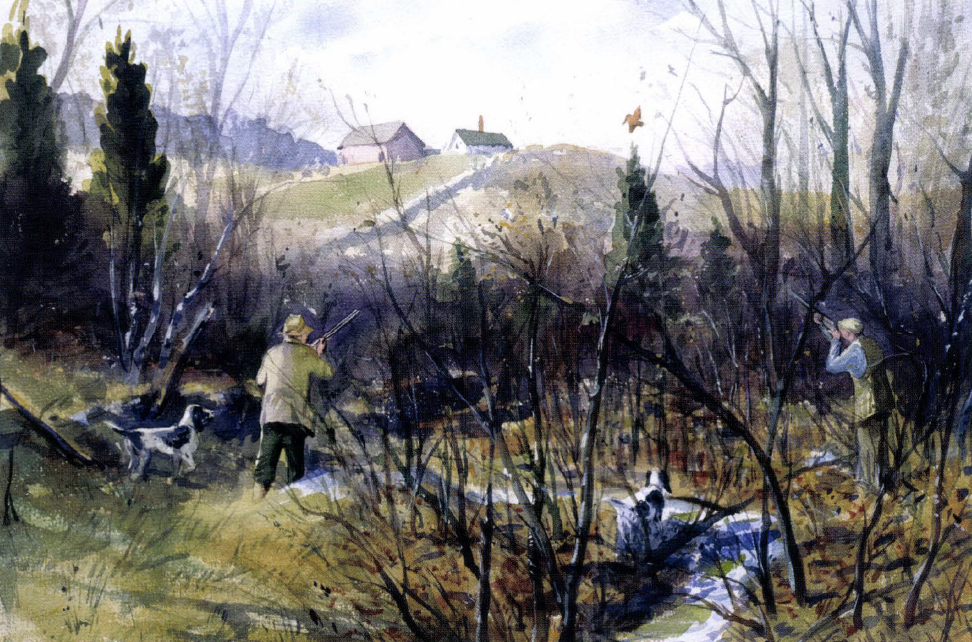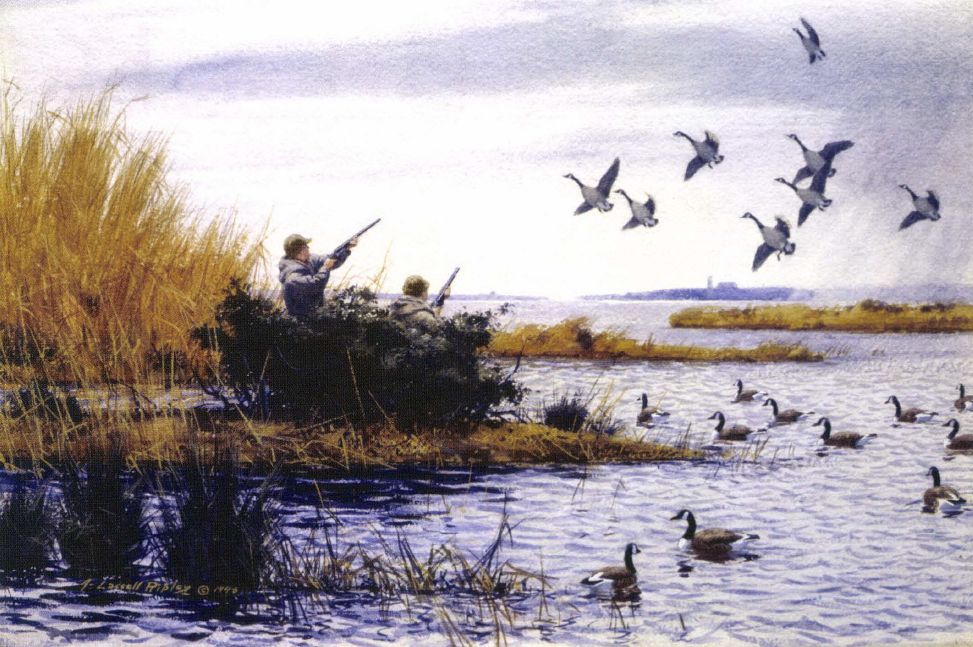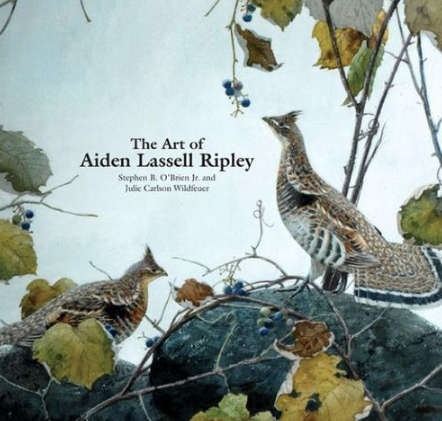The Art of Aiden Lassell Ripley
April 15, 2021



 SCA Articles
SCA Articles

Ripley’s paintings reflect not only his artistic talent, but also his passion for hunting and fishing.
It’s always a pleasure to see fine sporting paintings by an unusually talented sporting artist who actively hunted and fished and who, as Ogden Pleissner might have said: “knew one end of a shotgun from the other.” Such would be the captivating sporting art of Aiden Lassell Ripley.
Ripley is remembered primarily for his paintings of hunting, fishing and wildlife, but the life of this multi-talented man also reached into military, education, music, travel, print-making, and a variety of conservation and civic activities.
Ripley was born on New Year’s Eve, 1896, into a well-known Boston family in Wakefield, Massachusetts. His father was a musician with the Boston Symphony Orchestra, but young Ripley had a calling for the visual arts. Almost like a bad movie script, he first had to study music through his high school years.
After graduation he turned to drawing and painting, studying at the Fenway School of Illustration in 1917 and later at the Boston Museum School. Ripley showed great skill painting in both watercolors and oils. Early on he worked tirelessly on landscapes and various outdoor subjects, and soon he began exhibiting his work at shows and painting commissioned portraits.
It must be pointed out that Ripley was far from glued to his easel; he lived another life filled with hiking, hunting and fly fishing in the woods and waters of Massachusetts. Joined by Guido Perara, the son of an artist friend, he combed the countryside for ruffed grouse, woodcock and trout, and along with them, subjects for his paintings. Without realizing it, Ripley was educating himself for a busy life and successful career.
Unfortunately, as with many young men at that time, Ripley would find his career stalled not only by World War I, but also by the Great Depression.
In 1917 Ripley joined the Army Artillery Corps where his musical skills with the tuba earned him a place in General Pershing’s personal marching band. That wasn’t enough to keep him out of the fighting, however. Ripley saw action on the European front in the battles of Marne and Argonne in France.
In 1923 the Boston Museum School presented Ripley with a Paige Traveling Scholarship, a two-year program that enabled the artist and his wife Doris to live and study art in North Africa, Holland and France. After completing the program, the Ripleys extended their stay in Europe another two years.
Finally back home, the couple settled into a studio apartment in Boston’s historic Beacon Hill. To help ride out the failing post-war economy and restart his career, Ripley taught a drawing class at the Harvard School of Architecture. But his easel art was about to reach a remarkable turning point.

Guido Perara, his longtime shooting companion, offered Ripley a once-in-a-Iifetime piece of advice: “Why don ‘t you try putting sportsmen, the gunners and anglers into your landscapes instead of just people?”
Try it he did, and with it came a new level of success. Ripley’s paintings of fishermen, hunters and field-trialers were exactly what the sporting set wanted for their homes and offices.
His first one-man show in 1926 at The Guild of Boston Artists was a solid success. A Boston Globe reporter wrote: “The flash from obscurity to fame has come this past week to Aiden L. Ripley.” Fittingly, Ripley would go on to serve as the Guild’s president from 1959 to 1969.
When I think of Ripley’s many accomplishments, I am amazed at his breadth of knowledge and skills and his boundless energy. No doubt, his artistic achievements were a direct result of his personal experiences in the outdoors.
Though much of Ripley’s art was centered on sport, he was not adverse to surprising changes in subject matter. He painted a mural, Buying Land from the Indian, for the Winchester Public Library, then in 1965 he completed a more complicated mural that depicted Paul Revere’s Ride for the Lexington Post Office.
Ripley’s comfort zone was primarily oils and watercolors, but he occasionally gravitated back to drawing, which eventually led to his interest in etchings and dry points. His mastery in these media is obvious in his etching, American Widgeon, which became the ninth Migratory Waterfowl Stamp in 1942-43. More than one million stamps were sold.
I saw my first Ripley painting in Esquire magazine in 1947. It was an upland scene with two men, their dogs and flushing gamebirds, though I cannot remember which kind. But I can recall how vividly that painting reflected Ripley’s love for the shooting sports and his talent for rendering them.
Ripley’s painting technique was realistic without being photographic. His colors were natural and never gaudy. The figures – the hunters, dogs and birds – gave truth to a tension that Ripley liked to convey against a calm natural setting.
Toted sporting art dealer and author Russell Fink said, “A testimony to Ripley’s ability as an artist is the fact he was admitted to the National Academy of Design, a prestigious organization with very demanding criteria for admittance. Very few sporting artists have been voted into the Academy.
“Ripley was never satisfied with being average at anything he did,” Fink added. “He needed to excel.”
Aiden Lassell Ripley enjoyed a marvelous life and a brilliant career, doing just what he most wanted to do and when he wanted to do it. His paintings have clearly helped define America’s sporting art heritage.

Through numerous illustrations, this full-sized 11 x 12 inch book documents the artist’s progression and growth, from his early award-winning and acclaimed rise as an Impressionist to his accurate and detailed depictions that continue to shape sporting art today.
Shop Now
